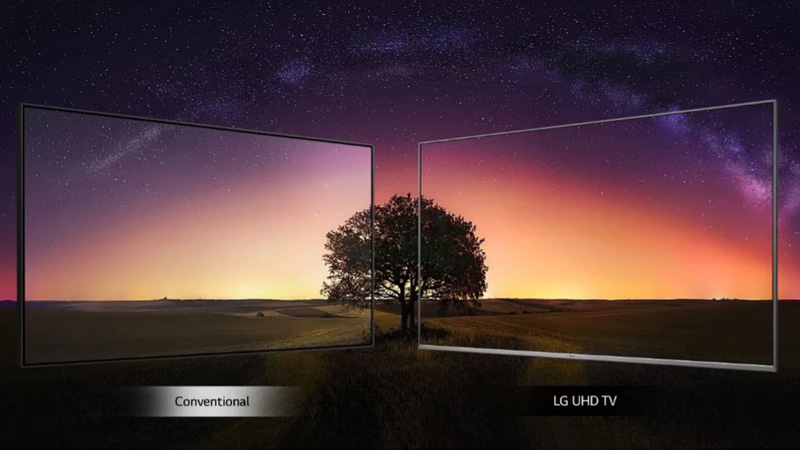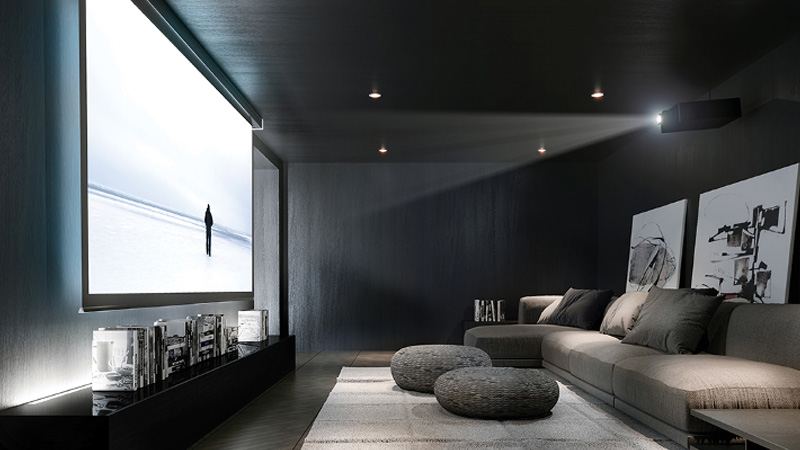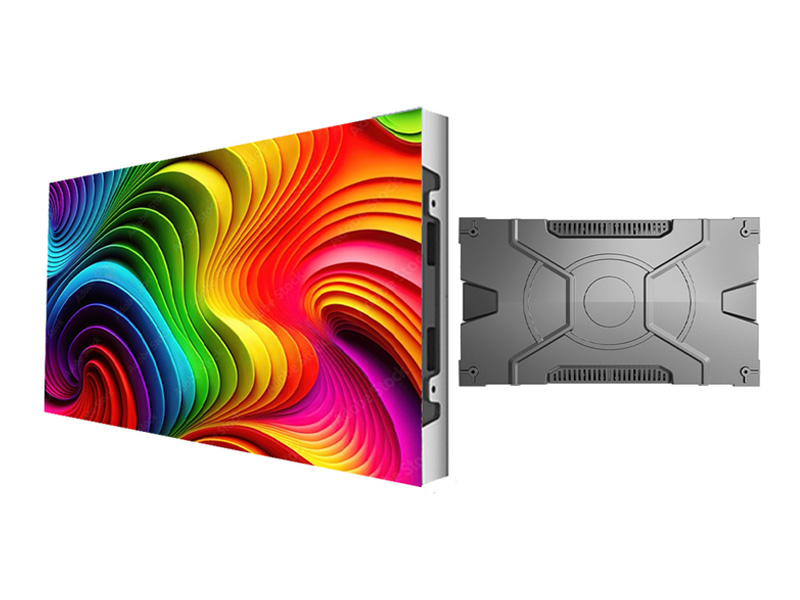4K vs UHD: Comprehensive Comparison 2024
When it comes to modern high-quality television or display screens, there are typically two types of qualities that often cause a bit of confusion for buyers: Ultra High Definition (UHD) and 4K display.
While these screens may appear similar in design and functionality, there are some differences that you need to consider before making a buying decision.
Considering this, we’re going to take a comprehensive dive into understanding the differences between Ultra High Definition and 4K displays, talk about some of the advantages of each variety, and help you make a better decision.
You may have quite commonly heard the term UHD in monitors and TV screens, the full abbreviation for UHD is Ultra High Definition, a term that was founded by the modern TV and consumer electronics sector.
A typical UHD resolution, when you talk about high-quality and slightly expensive LED screens and gaming monitors are 3849 x 2160 pixels.
Compared to a standard high-definition television screen or monitor, the UHD screen packs 4x the total number of pixels displayed while an average HDTV has a 1920 x 1080-pixel resolution. This is also one of the reasons why you may also hear some people calling UHD TV screens or monitors 4k UHD.
Compared to HDTV screens, Ultra High-Definition LED monitors and screens provide crisper, more immersive, and more beautiful picture displays, guaranteeing an incredible movie-watching or gaming experience.
However, it is also important to consider that the super-sharp picture resolution and quality in UHD screens are more noticeable on larger screen sizes compared to smaller ones. UHD TVs do come in smaller sizes as well.
4K resolution, on the other hand, is the superior version of Ultra High Definition and is essentially used in film production, video editing, and video creation.
The term 4K was derived primarily in line with the total number of resolutions and the width of the resolution, which basically amounted to 4000 pixels.
In the cinema and video production sector, 4K screens are also commonly referred to as DCI 4K – which comes with a staggering screen resolution comprising 4096 x 2160 pixels.
While Ultra High-Definition monitors and LED screens offer beautiful video imagery in high-quality detail, 4K provides an even more immersive and superior video-watching experience, with fantastically clear and smooth images. It is a notch higher than UHD screens.
However, it is also vital to note that the difference 4K screens provide may be a bit tough to notice if you don’t have a 4K screen.
However, the difference in quality is significant for video editors, filmmakers, video marketing professionals, and the cinema industry.
While Ultra High Definition and 4K displays are both designed to offer superior resolution and immersive viewing experiences, there is one major difference that you need to know about.
You see, while UHD TVs or computer monitors are best suited for average consumers who are looking for better quality and entertainment value, 4K resolution displays are more suited for video production professionals or the video and cinema industry.
Considering this, let’s do a thorough comparative analysis of both types of resolution displays.
-
Screen Display Resolution
Analyzing Ultra High Definition with 4K, you will notice that UHD screens and monitors comprise a maximum pixel level of 3840 x 2160, which is more than sufficient viewing experience when it comes to watching shows and movies, or gaming as most movies and games are designed to support UHD resolution.
However, 4K screens go beyond UHD level viewing, providing a whopping 4096 x 2160 pixels, which is excellent for producing films and videos. Referred to as DCI 4K, this resolution is mainly used in the entertainment industry.
So, when it comes to choosing between a UHD screen vs. a 4K screen, know that the latter offers a tad bit more crisper and immersive viewing experience.
-
The Aspect Ratio of Both Displays
Let’s first understand aspect ratios briefly. Aspect ratios essentially define the total width of the screen in relation to its total height. The width and height of a UHD screen vs. a 4K screen are also different due to the applications or uses of both display types.
For instance, a UHD screen provides a standard 16:9 aspect ratio as it is perfect for watching movies and shows on numerous streaming platforms such as Netflix, Hulu, Prime, Disney+, and more. Plus, the 16:9 aspect ratio also matches most TV broadcasts.
4K screens, on the other hand, provide an aspect ratio of 17:9, which is typically utilized in filmmaking and video production.
-
UHD vs. 4K Display: What Is the Industry Standard?
When you talk about the modern industry-standard in relation to both UHD and 4K displays, it is vital to consider the fact that UHD is the more prominent display type in the consumer electronics industry.
UHD screens and monitors come with enhanced resolution compatibility in relation to the current quality of television broadcasts, gaming, and movies.
In contrast, 4K resolution is more commonly used in the field of cinema and video production. This is where the true utilization of 4K pixels is realized, providing viewers with more crisp and immersive image quality.
When you talk about the world of high-end display screens, particularly UHD and 4K resolutions, it is quite common to overlap both these display types. However, both displays have a wide variety of user applications.
-
Monitors – UDH vs. 4K
When it comes to monitors, both Ultra High Definition and 4K displays provide amazing graphics and image quality, especially when you compare them with an average HD screen. However, there are some notable differences.
For example, while UHD monitors are used by the average PC or console gamer or to watch movies, 4K monitors are mostly used by expert graphics designers and video editors. Here, due to the enhanced pixel profile of 4K monitors, these professionals can create videos in enhanced detail.
-
LED TV Sets
In terms of television screens, it is quite common to confuse UHD screens with 4K screens or consider both the same. While manufacturers also interchangeably use both these terms, it is important to note that there are some differences between different types of television sets.
For instance, there is a difference between an Ultra High-Definition HD TV and a 4K OLED TV in terms of display technology and viewing experience. While UHD LED screens offer in-depth picture quality and resolution, OLED 4K TVs are designed to provide better and deeper colors and blacks.
So, if you’re shopping for a high-quality TV and want to make a choice between OLED and 4K UHD, keep in mind that both types of technologies vary in display aspects.
However, it is also important to consider that there are plenty of high-end TV brands that have launched screens that can provide both OLED functionality and 4K UHD viewing.
-
Gaming with UHD vs. 4K Display
When it comes to console gaming, the decision to choose UHD or 4K will mainly rely on the console as well as the types of games you wish to play.
You see, while consoles such as PlayStation 4 and Xbox One X are designed to provide a 4K gaming experience, it is important to note that there are very few 4K games on both these consoles.
However, it does make sense to use 4K screens to play games on the very latest consoles such as the PlayStation 5 and the Xbox Series X as triple-A games come in spectacular 4K resolution.
-
Platform Streaming and File Downloading
When it comes to bandwidth efficiency, regular HDTVs are best for live streaming as they are optimal for low bandwidth usage. Ultra-High Definition comprises bigger files, which means it is only well-suited for users who want to view pre-recorded content in higher quality.
-
Event Production
For mass-scale events that often feature incredibly large screens, the choice becomes simple. Event production professionals lean towards higher pixel rates and better resolution – such as 4K screens. However, for smaller and more budget-efficient events, UHD screens are the way to go.
When it comes to immersive viewing experiences and in-depth color details, especially for outdoor or indoor events, nothing is more important than to opt for the best LED screens. At LEDSINO, we specialize in providing rental LED UHD and 4K screens for both small and large-scale events.
We have been operating in the consumer electronics industry for more than 10 years and function as both a manufacturer and retailer of top-notch display products and accessories. We have a wide variety of LED screens specifically designed for exhibitions, public and private events, home theaters, and screenings.
We realized just how fast the world of digital displays is evolving, especially when you talk about public events, a rejuvenating office culture, shopping, the modern party scene, and socializing.
At LEDSINO, we design and provide an incredible range of UHD and 4K screens and connectors, carefully accommodating the specifications of our clients.
Each product is categorized and geared towards individual occasions and events. For example, we have an entirely different product series for entertainment and marketing events while a different product lineup for things such as nightclubs, places of worship, stage events, and much more.
![]() Front-end Convenient Maintenance
Front-end Convenient Maintenance
![]() Cabinet Size: 600*337.5mm/16:9 Ratio
Cabinet Size: 600*337.5mm/16:9 Ratio
![]() Compatible with 300*168.75mm Module
Compatible with 300*168.75mm Module
![]() With 3 Years Warranty and 5% Spare Parts
With 3 Years Warranty and 5% Spare Parts
![]() Front Convenient Maintenance
Front Convenient Maintenance
![]() Hard Connection, No Need Cables
Hard Connection, No Need Cables
![]() Can Removable Back Power Supply Box
Can Removable Back Power Supply Box
![]() With 3 Years Warranty and 5% Spare Parts
With 3 Years Warranty and 5% Spare Parts
6. Bottom Line
We live in a continuously changing world of consumer electronics, especially digital displays. This makes it even more important for users to know the real differences between UHD and 4K display units, especially when they are making a buying decision.
Contact
 Building D, Hongfa Science Park,
Building D, Hongfa Science Park,
2035 Songbai Road, Shiyan, Bao’an District, Shenzhen, Guangdong, China.










